 Multiple Choice Questions
Multiple Choice QuestionsThe equivalent resistance between the points A and B will be (each resistance is 15 Ω)
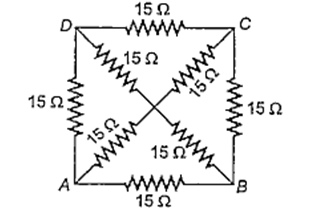
30 Ω
8 Ω
10 Ω
40 Ω
B.
8 Ω
The circuit can be shown as given below
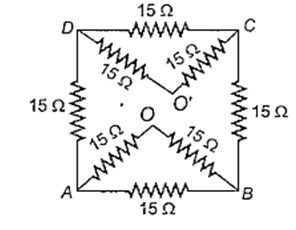
The equivalent resistance between D and C
Now, between A and B, the resistance of upper part ADCB,
R1 = 15 + 10 + 15 = 40 Ω
Between A and B, the resistance of middle part AOB
R2 = 15 + 15 = 30 Ω
Therefore, equivalent resistance between A and B
Two similar circular loops carry equal currents in the same direction. On moving coils further apart, the electnc current will
increase in both
decrease in both
remain unaltered
increases in one and decreases in the second
Three resistors 1 Ω, 2 Ω and 3 Ω are connected to form a triangle. Across 3 Ω res1stor a 3 V battery is connected. The current through 3 Ω resistor is
0.75 A
1 A
2 A
1.5 A
The accurate measurement of emf can be obtained using
multimeter
voltmeter
voltameter
potentiometer
The resistance of a wire at 300 K is found to be 0.3 2. If the temperature coefficient of resistance of wire is 1.5 x 10-3 K-1, the temperature at which the resistance becomes 0.6 Ω is
720 K
345 K
993 K
690 K
Near a circular loop of conducting wire as shown in the figure an electron moves along a straight line. The direction of the induced current if any in the loop is

variable
clockwise
anti-clockwise
zero
A battery of emf E has an internal resistance r. A variable resistance R is connected to the terminals of the battery. A current i is drawn from the battery. V is the terminal potential difference. If R alone is gradually reduced to zero, which of the following best describes i and V ?
i approaches zero, V approaches E
i approaches , V approaches zero
i approaches , V approaches E
i approaches infinity, V approaches E
Three voltmeters A, B and C having resistances R, 1.5R and 3R respectively are used in a circuit as shown. When a potential difference is applied between X and Y, the readings of the voltmeters are V1 and V2, V3 respectively. Then
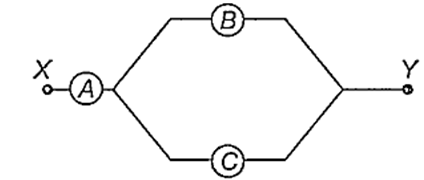
V1 = V2 = V3
V1 < V2 = V3
V1 > V2 > V3
V1 > V2 = V3
In the circuit given here, the points A, B and C are 70 V, zero, 10 V respectively. Then
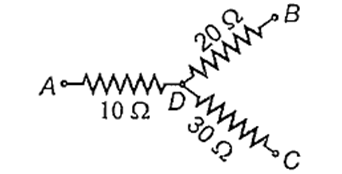
the point D will be at a potential of 60 V
the point D will be at a potential of 20 V
currents in the paths AD, DB and DC are in the ratio of 1 : 2 : 3
currents in the paths AB, DB and DC are in the ratio of 3 : 2 : 1
B1, B2 and B3 are the three identical bulbs connected to a battery of steady emf with key K closed. What happens to the brightness of the bulbs B1 and B2 when the key is opened ?
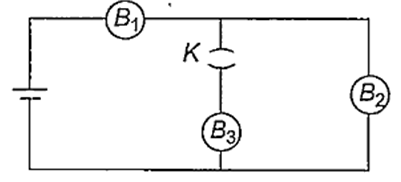
Brightness of the bulb B1 increases and that of B2 decreases
Brightness of the bulbs B1 and B2 increase
Brightness of the bulb B1 decreases and B2 increases
Brightness of the bulbs B1 and B2 decrease
